Butterfly and moth wings can be stunningly beautiful. More importantly, some have colourful and elaborate patterns that serve as a defence against hungry predators.
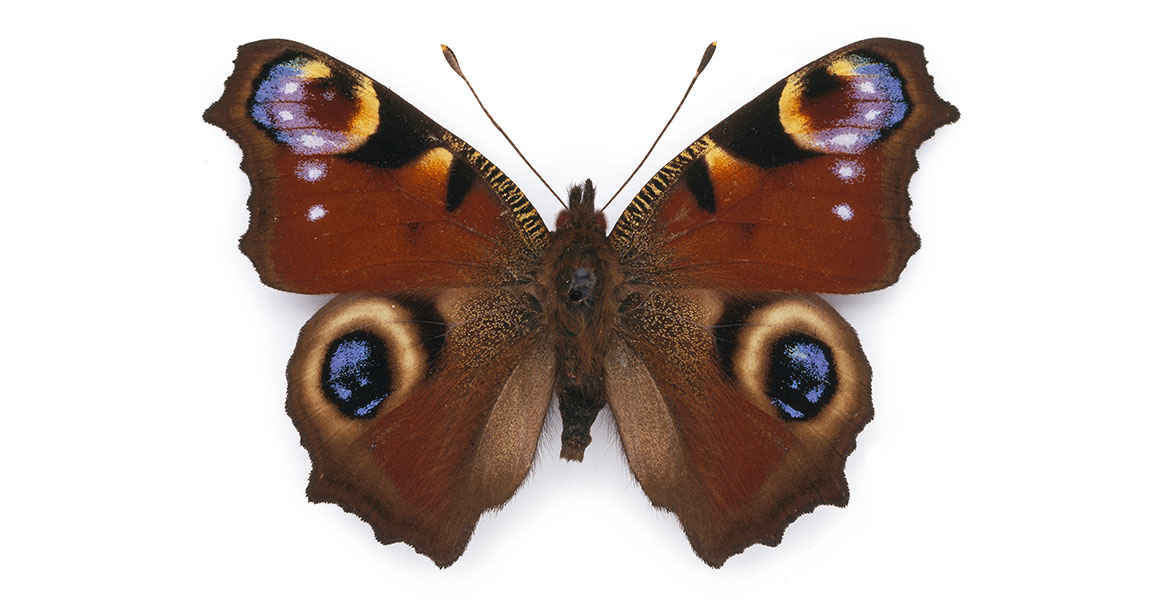
Peacock butterflies are one of many species of butterflies and moths that have evolved false eyes to help defend themselves against predators
There are many butterfly and moth species that have developed what appear to be extra eyes.These distinct wing markings are often referred to as eyespots, false eyes or false eyespots and come in a wide variety of colours and sizes.
Eyespots appear on both adults and larvae and are often highly distinguishable from the rest of the animals' wing patterns. The eye-catching markings are usually circular, made up of concentric rings of contrasting colours.
Patterns often evolve to help animals hide from predators, but eyespots usually increase visibility. But their conspicuousness suggests their effectiveness - the trait would unlikely have evolved so widely if it was to the detriment of the insect.
Intimidating predators
Not all butterflies and moths are thought to use their eyespots in the same way. There are two main theories for how they function as anti-predator defences.
The first is that they evolved for intimidation. It's thought that eyespots simply mimic the eyes of predators. In this case they act as a deterrent to predators, making attackers think they are suddenly facing a larger and potentially dangerous animal.
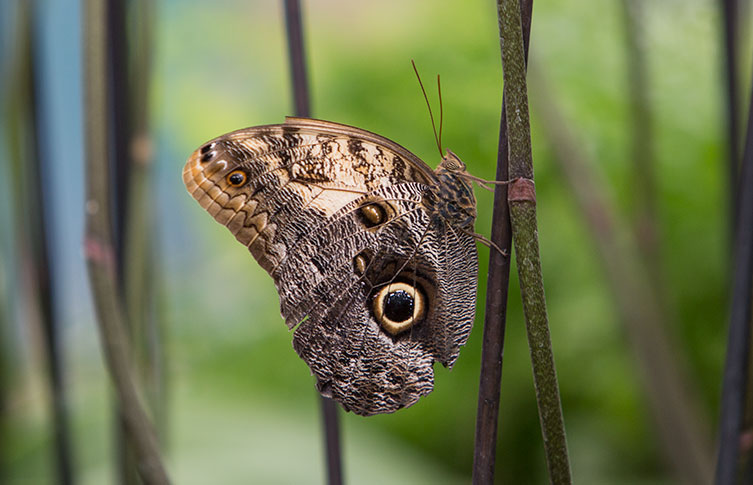
The central and South American genus Caligo has large round eyespots on their hindwings which resemble owl eyes - giving them their common name of owl butterflies.
Some butterflies and moths have their eyespots hidden on their hindwings and will flash predators a startling glimpse of them.
Alessandro Giusti, Curator of Lepidoptera at the Museum, says, 'Many species' eyespots have an interesting series of circles and in the middle there is a white part which almost mimics an eye reflecting light.
'Evolution has really given lots of strength to these looking convincingly like eyes.'
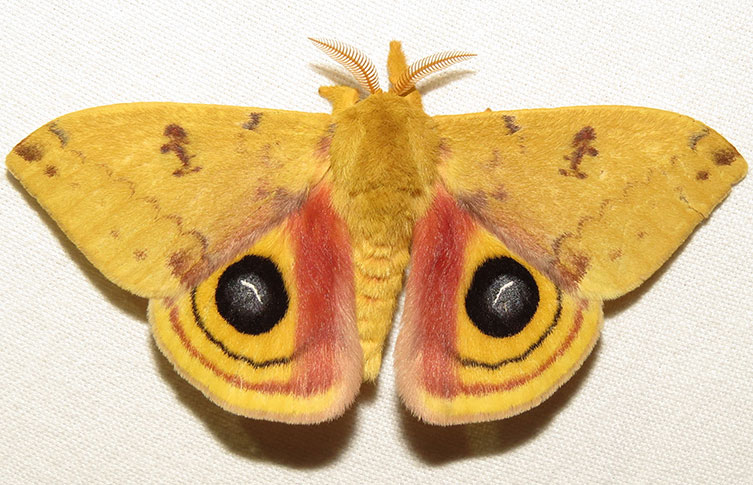
In a study of lepidopteran eyespots, predators were offered wings featuring various eyespot patterns. The wings that had eyespots with glistening centres were found to be more effective at deterring predators than those without them.
The intimidation hypothesis also suggests that eyespots are effective as they are a noticeable signal. This suggests that the butterflies and moths are off-putting to their predators as they are covered in patterns of bright, highly-contrasting colours.
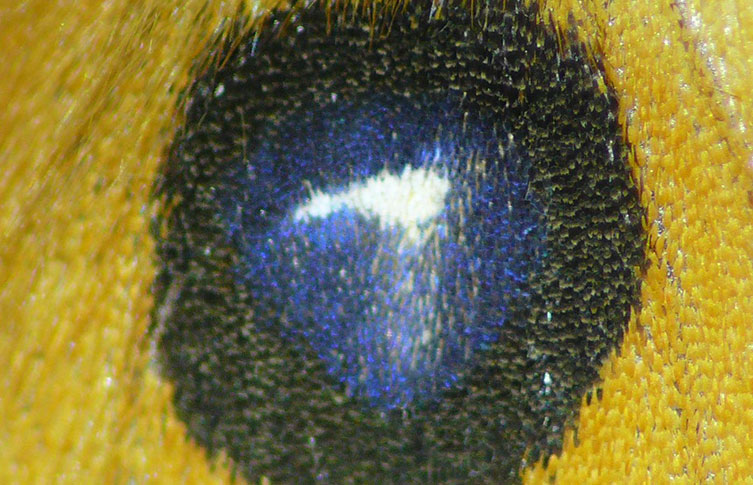
A close up view of an eyespot on a Tau Emperor moth (Aglia tau) © Harald Süpfle/ Wikimedia Commons (CC BY-SA 3.0)
This is based on the concepts of neophobia (the extreme fear of the unfamiliar) as well as dietary conservatism in predators (the observation that they will avoid eating prey that has an unusual appearance).
Deflecting an attack
Rather than preventing an attack entirely, another use for eyespots is to distract predators. The markings encourage an attacker to aim for parts of the insect's body that aren't vital for its survival - such as the edges of the wings.
'The eyespots might be used to draw attention. If a predator hits the head, it will kill the butterfly or moth instantly. So it may be that they're used to distract the predator away from vital parts of the body,' says Alessandro.
Attacks directed at the wing margins offer a higher chance of survival as the insect would be able to survive with just a torn wing.
The squinting bush brown butterfly (Bicyclus anynana) features a series of eyespots along the outer edges of it wings. The patterns vary depending on the time of year.
During the wet season when the animals are flying more to feed and reproduce, and therefore more at risk from predator attacks, the eyespots are more conspicuous.
'Other butterflies, like Lycaenidae, have got a series of little eyespots on their posterior and in some it looks like a head with antennae - so that would distract a predator to a non-vital part of the body'.
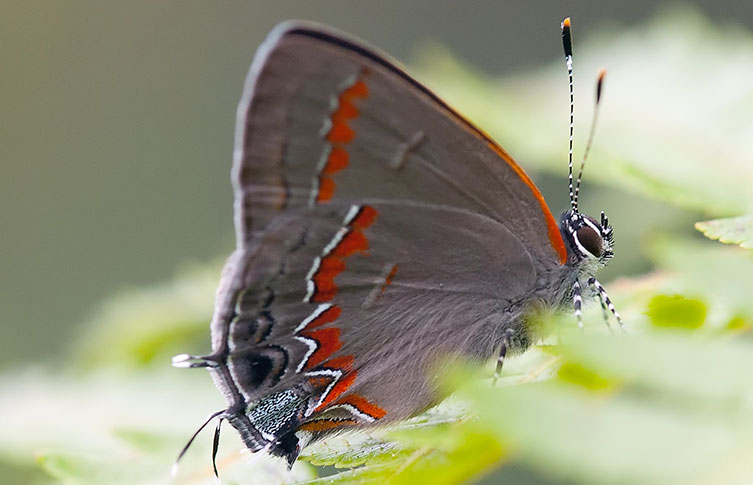
The red-banded hairstreak (Calycopis cecrops) in the family Lycaenidae has posterior markings, but also small tails that mimic antennae that confuse predators © Umbris/ Wikimedia Commons (CC BY-SA 3.0)
Caterpillars with extra eyes
Many caterpillars are defenceless, but a few species have found ways to prevent themselves being picked off by predators, including cryptic colouring or hairs that cause irritation when touched. But others have developed an eyespot approach.
'The entire caterpillar is vulnerable and wherever a predator hits will damage it. So for caterpillars it is definitely about making them look like something else,' says Alessandro.
With eyespots on their heads, some caterpillars, such as Hemeroplanes triptolemus, have the ability to expand the front segments of their bodies, making them look off-putting to predators.
Watch as Alessandro explains more about this clever tactic.
Most Sphingidae caterpillars have a small horn at their posterior end. Some species, during one of the last instars (the periods between each moult), will shed it.
'In the species Eumorpha labruscae, the gaudy sphinx, they drop their horn and have an eyespot there that starts throbbing as well. They also have eyespots on their sides, so it's almost like a snake mimic.'
Alessandro explains more about snake-mimicking caterpillars
Eyespots in the animal kingdom
Eyespots aren't restricted to butterflies and moths - they appear in a number of places throughout the animal kingdom. There are fish, birds, reptiles and other insects that have developed these useful markings.
Alessandro explains, 'There doesn't necessarily have to be a function for a gene to survive. But eyespots are recurrent, not only on moths and butterflies, but also on other insects and animals.
'They have evolved in so many different species and families that they must have an important function.'
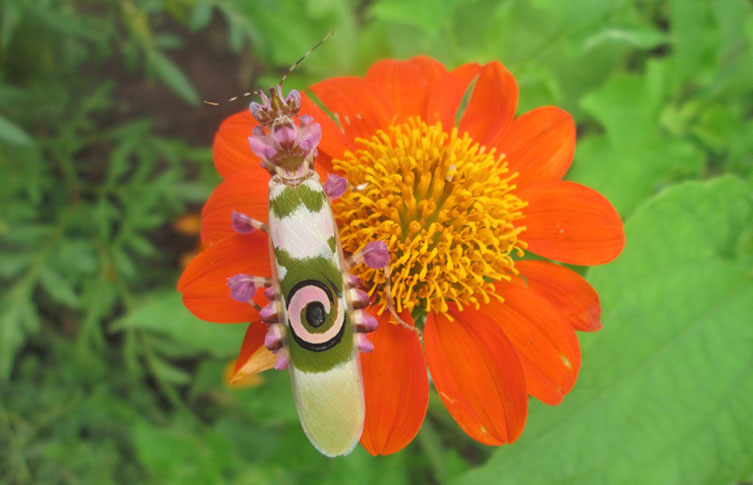
The spiny flower mantis uses its eyespots in a similar way to some butterflies and moths - to intimidate a predator © Nigrilover/ Wikimedia Commons (CC BY-SA 4.0)
A striking example is the spiny flower mantis (Pseudocreobotra wahlbergii), native to southern and eastern Africa. Adults of this species have a swirling, green and yellow eyespot pattern on their forewings.
The mantis will raise its wings and prominently display the extra eyes, making it appear much larger and threatening to predators.
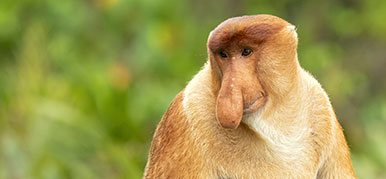
What on Earth?
Just how weird can the natural world be?

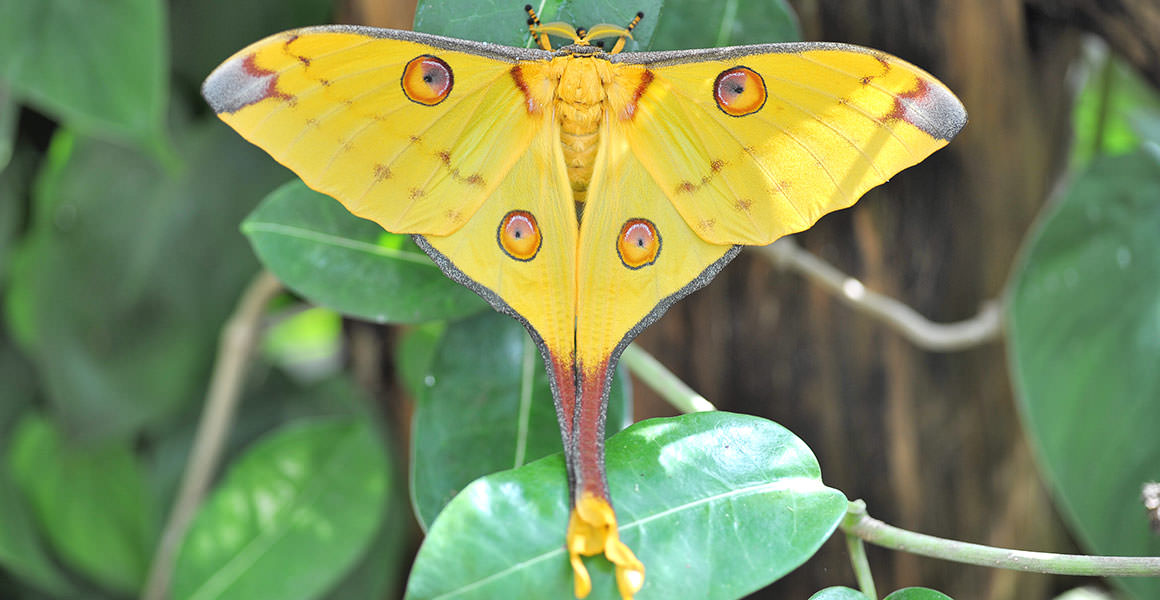
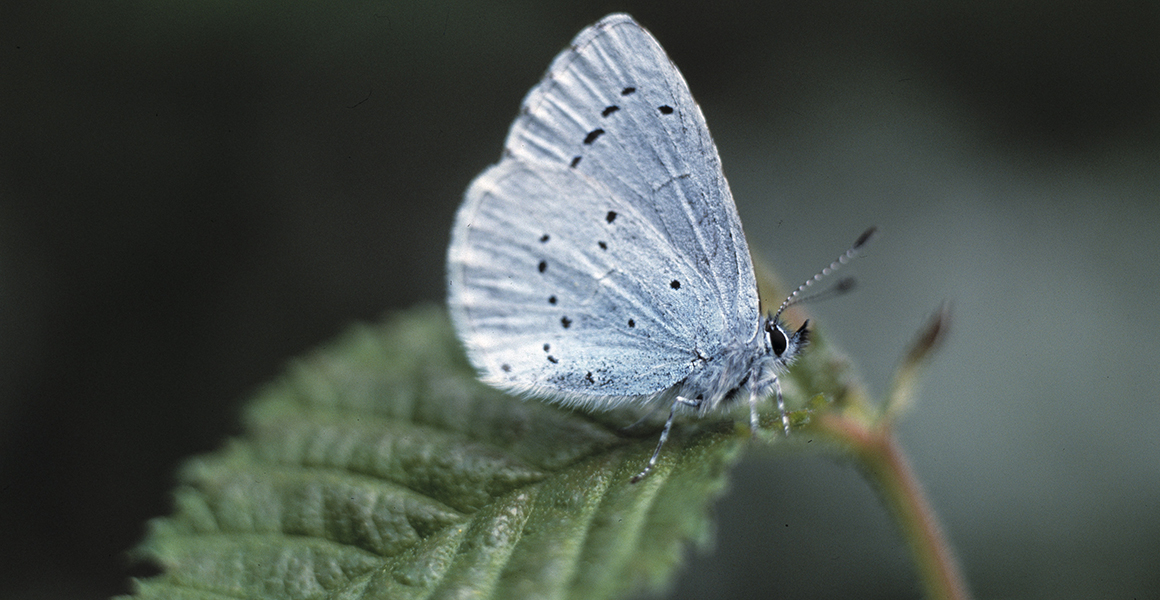

Don't miss a thing
Receive email updates about our news, science, exhibitions, events, products, services and fundraising activities. We may occasionally include third-party content from our corporate partners and other museums. We will not share your personal details with these third parties. You must be over the age of 13. Privacy notice.
Follow us on social media